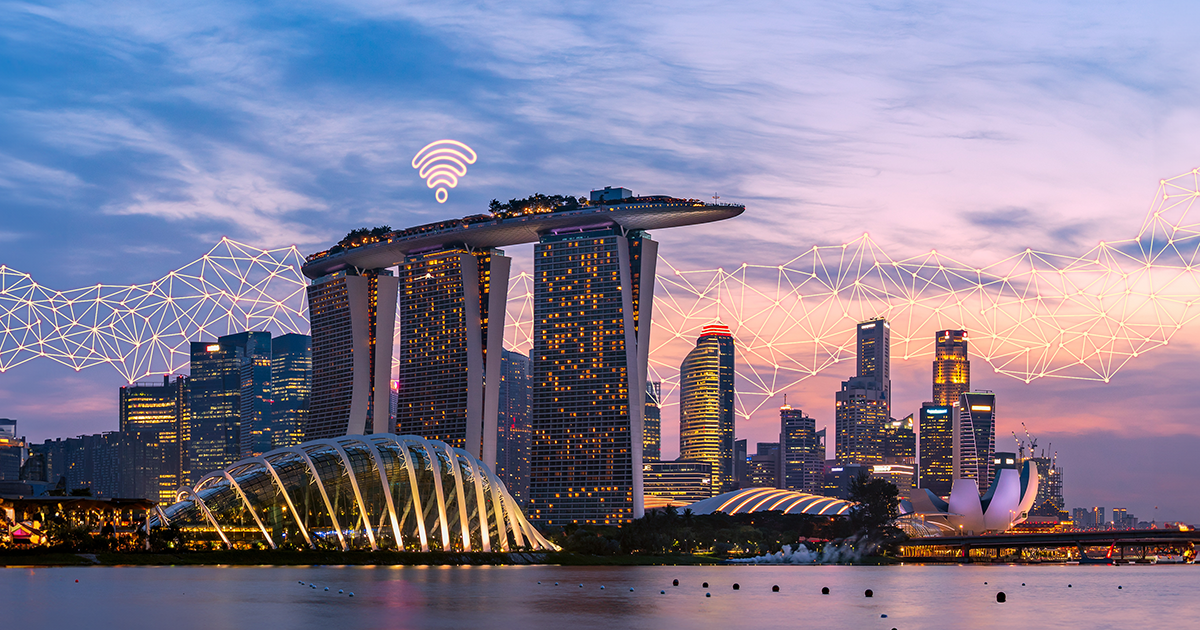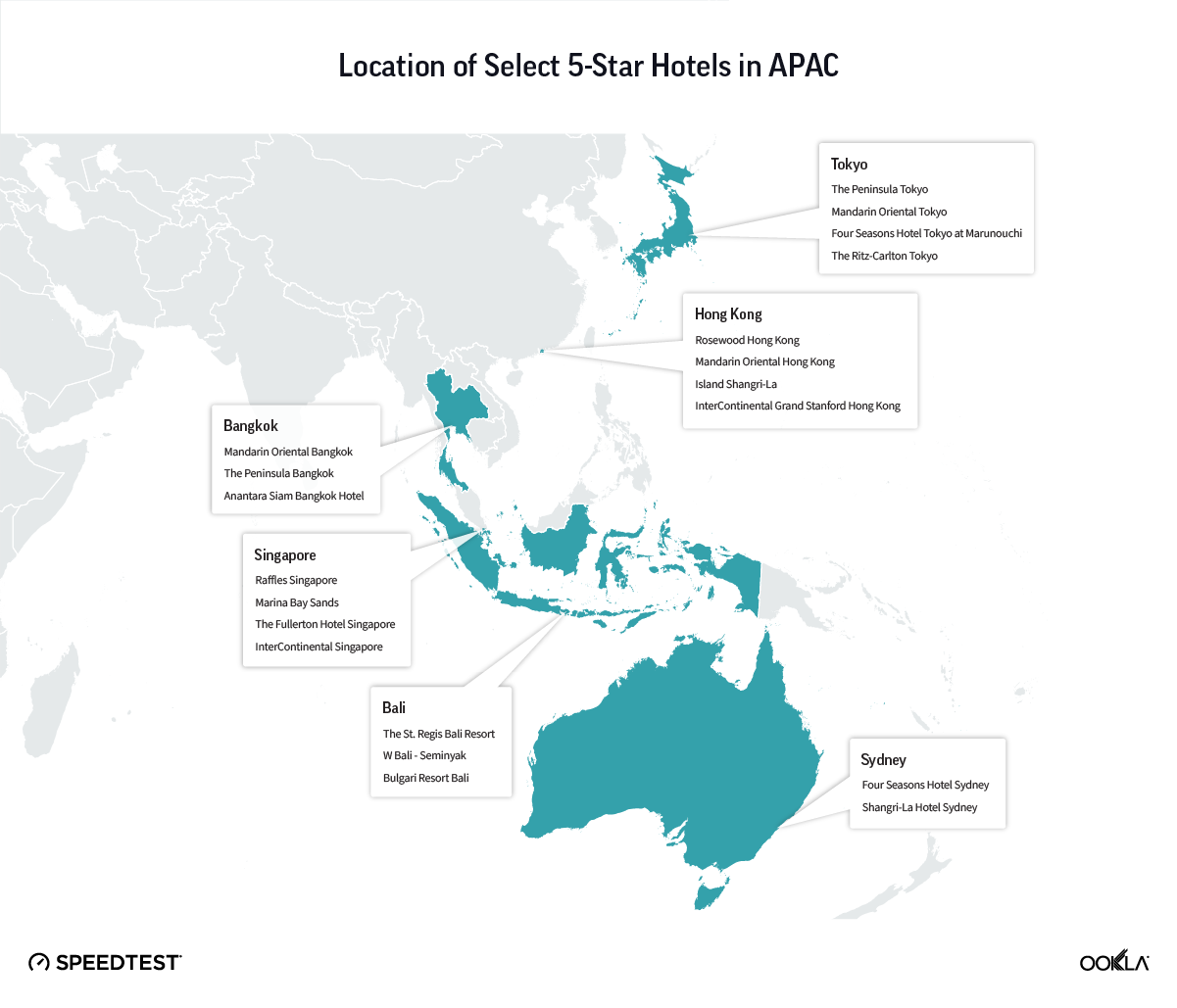Intense fiber overbuilding in advanced European markets has made investments in timely Wi-Fi upgrades a critical lever for enhancing and differentiating multi-gigabit experiences
European markets are at the forefront of the global transition to full-fiber networks in the last mile, with multi-gigabit home broadband connections becoming increasingly common in the most advanced Western and Northern European markets. A groundswell of fiber investment has driven extensive network overbuilding at many residential addresses, expanding consumer choice but making it difficult for ISPs to differentiate beyond price.
The critical role of home Wi-Fi solutions in enhancing broadband experiences has come into sharper focus in recent years, with leading European ISPs adopting mesh solutions and offering more advanced customer premise equipment (CPE) to improve performance and unlock new revenue streams through innovative bundling and minimum Wi-Fi speed guarantees. The challenge now lies in spreading gigabit-level performance throughout the entire home, beyond the line connection point, to meet the growing demands of an increasing number of connected devices.
The arrival of Wi-Fi 7 presents a unique opportunity for leading ISPs to address this challenge head-on, offering a new avenue for fiber differentiation and a stronger focus on quality of experience (QoE). With advancements in speed, latency, and efficiency, Wi-Fi 7 is becoming an important tool for ISPs looking to compete more effectively in the premium segment of the fixed market, enabling best-in-class experiences on multi-gigabit connections.
Key Takeaways:
- Central and Western European countries lead in Wi-Fi 7 adoption, while the Nordics boast the most advanced overall Wi-Fi mix: At the end of 2024, France (1.5% Speedtest sample share1), Switzerland (0.9%), and Denmark (0.6%)—among the world’s leading fixed broadband markets in fiber penetration and consistently ranked in the Speedtest Global Index™ top ten for median download speed—had the highest adoption of Wi-Fi 7 connections. When considering overall adoption of modern Wi-Fi standards (Wi-Fi 6 and Wi-Fi 7 combined), Nordic countries such as Iceland (46%), Norway (39%), and Sweden (38%) led in Europe, with over a third of all connections in each of these countries using these modern Wi-Fi standards.
- Wi-Fi 7 drives substantial improvements in performance across all metrics: Among the ten countries with the highest Wi-Fi 7 penetration at the end of 2024, the average country-wide median download speeds on Wi-Fi 7 (565.80 Mbps) were up to 78% higher than those on Wi-Fi 6. Upload speeds—boosted by technical advancements like Multi-Link Operation (MLO), which enables simultaneous transmissions across multiple spectrum bands—were nearly twice as fast as those on Wi-Fi 6. Latency improvements, meanwhile, have been more modest, with median latency (13 ms) across the country sample just over 11% lower than on Wi-Fi 6.
- Legacy Wi-Fi standards continue to dominate in Europe, weighing on fiber experiences: By the end of 2024, legacy Wi-Fi standards (Wi-Fi 4 and Wi-Fi 5) still accounted for over 70% of connections in many European countries. Western European markets with very high fiber penetration, such as Spain (75% legacy Wi-Fi share), Portugal (78%), and Ireland (84%), lagged, hindering their competitiveness in fixed network performance.
Legacy Wi-Fi standards have become a bottleneck in fiber-rich countries, limiting the potential of multi-gigabit connections
ISP investments in advanced CPE, particularly those supporting the latest Wi-Fi standards and mesh solutions, are critical for maximizing the throughput, coverage, and overall reliability benefits of fiber broadband—especially to optimize the experience in bread-and-butter applications like video streaming, gaming, and web browsing.
Failing to migrate fixed subscribers to modern CPE (e.g., Wi-Fi 6 and Wi-Fi 7) is strongly associated with poorer performance outcomes, especially at the upper end (e.g., 90th percentile). This undermines the benefits of full-fiber connections, especially when higher-speed tiers—often offered at a premium price—are not matched with sufficiently capable CPE.
The rollout of full-fiber networks in Europe—particularly investments in infrastructure supporting symmetrical 10 Gbps speeds with XGS-PON (the latest standard in passive optical networking)—is driving the proliferation of multi-gigabit residential connections. As a result, the bottleneck has shifted from the last-mile access line to in-home Wi-Fi networks, which now face challenges from larger property sizes, modern insulation materials that hinder signal propagation, and the rapid growth in both the number and diversity of connected devices.
Majority of Fixed Broadband Subscriptions in France Are Now Multi-Gigabit Capable
European Commission | DESI 2024
Multi-gigabit fiber connections accounted for nearly 20% of all fixed broadband subscriptions on average across the EU, according to the latest Digital Economy and Society Index (DESI) published by the European Commission in 2024. France (52%), Hungary (37%), and Romania (30.45%) led the bloc, each featuring well over a quarter of all fixed subscriptions provisioned with download speeds of at least 1 Gbps.
For these multi-gigabit subscribers—who typically represent the high-value premium segment of the fixed market and typically expect the best experience—legacy Wi-Fi standards can significantly constrain performance. Wi-Fi 4, for example, which still accounted for over 20% of active connections in the UK and France at the end of 2024 (based on Speedtest sample share), offers a maximum theoretical throughput of 600 Mbps, while Wi-Fi 5 (which made up more than half of all Wi-Fi connections in the UK) raises this to 3.5 Gbps. However, both fall well short of the increasingly common provisioned fiber speeds of 5 Gbps and 10 Gbps seen in advanced European markets such as France.
Fiber-Rich Countries like Ireland, Spain, and Portugal Still Have a Large Legacy Wi-Fi Base
Speedtest Intelligence® | December 2024
Analysis of Speedtest Intelligence® data reveals a general trend in Europe: markets with higher full-fiber penetration and a greater share of multi-gigabit subscriptions tend to have a lower proportion of legacy Wi-Fi standards in use, reflecting ISP success in migrating customers to modern CPE. However, several notable markets stand out as exceptions to this trend, highlighting the need for new strategies to increase the adoption of more capable Wi-Fi standards.
Spain, Portugal, and Ireland, for example, rank among the highest in Europe for full-fiber coverage but have a disproportionately outdated Wi-Fi mix, with up to 84% of fixed connections still reliant on Wi-Fi 4 or Wi-Fi 5 in these countries at the end of 2024. The persistence of legacy Wi-Fi standards, combined with lower multi-gigabit adoption—partly due to ISPs limiting access to higher provisioned speed tiers—may help explain why these countries underperform in the Speedtest Global Index compared to France and Denmark, despite exhibiting wider overall full-fiber coverage. This is a notable example of legacy Wi-Fi standards acting as a bottleneck on fixed performance in fiber-rich countries.
Early deployments of Wi-Fi 7 demonstrate significant performance gains, showcasing the full potential of fiber
Wi-Fi 6, introduced five years ago, marked a major advancement in home networking, delivering the first Wi-Fi standard designed to fully harness the multi-gigabit capability of full-fiber connections. The later introduction of Wi-Fi 6E, with support for the 6 GHz band, unlocked significant additional capacity in less congested spectrum, enhancing ISPs’ ability to improve home Wi-Fi performance at the high end. Beyond delivering better performance, it also enabled ISPs to monetize ‘Wi-Fi guarantees’ for the first time through the provision of high-performance mesh systems and minimum multi-room speed commitments.
Despite early supply chain disruptions from the pandemic affecting the availability of Wi-Fi 6-capable CPE, the technology has been widely deployed across advanced markets in Europe, yielding significant improvements in real-world fixed broadband performance. By the end of 2024, for instance, median download speeds on Wi-Fi 6 in the top three European markets with the highest adoption—based on Speedtest sample share—were at least 50% faster than those on Wi-Fi 5, demonstrating a marked performance uplift. These high-penetration markets, primarily in the Nordics, included Iceland (Wi-Fi 6 accounting for 45% of all connections), Switzerland (42%), and Norway (38%).
The introduction of Wi-Fi 7, driven in Europe by large-scale launches from Iliad’s Free in France and BT’s EE last year, marks the next step in ISPs’ efforts to maximize the performance of multi-gigabit full-fiber connections and spread it throughout the home with advanced mesh systems. While Wi-Fi 6/6E CPE will continue to serve the vast majority of full-fiber connections effectively, Wi-Fi 7’s future-proof scalability and its notable latency improvements—beyond just headline provisioned speeds—will become key differentiators over time for better QoE outcomes.
Wi-Fi 7-capable CPE significantly expand the theoretical performance ceiling of home Wi-Fi, supporting more connected devices and nearly quintupling potential downlink speeds. These enhancements are enabled by key features such as doubling the bandwidth in the 6 GHz band, allowing devices to operate across multiple bands simultaneously with Multi-Link Operation (MLO), and improving scheduling to minimize congestion and interference.
The real-world performance gains from Wi-Fi 7, coupled with the higher provisioned tariff speeds typically offered with Wi-Fi 7-capable CPE (such as Free’s 8 Gbps symmetrical offering in France), are evident in Speedtest Intelligence data. At the end of 2024, Free’s subscribers in France—where Wi-Fi 7 made up over 4% of the ISP’s Wi-Fi connections, among the highest share in Europe—recorded median download speeds of over 1.1 Gbps on Wi-Fi 7, nearly double the performance levels observed on Wi-Fi 6.
Wi-Fi 7 Drives Substantial Download Speed Uplift on Multi-Gigabit Connections
Speedtest Intelligence® | December 2024
Similar improvements in download speed performance on Wi-Fi 7 have been observed in the UK, where EE has bundled Wi-Fi 7 CPE with tariffs offering full-fiber speeds of up to 1.6 Gbps and introduced a money-back guarantee to ensure at least 100 Mbps in ‘every corner’ of the home. Speedtest Intelligence data shows that median download speeds on Wi-Fi 7 with EE’s fixed broadband reached 665.01 Mbps at the end of 2024—more than four times the performance recorded on EE-based Wi-Fi 6 connections during the same period.
Wi-Fi 7 is a Key Enabler of ISP Ambitions for Symmetrical Uplink and Downlink Performance
Speedtest Intelligence® | December 2024
In terms of upload speed performance—critical for applications like live streaming and video conferencing—Wi-Fi 7 has been positioned as a mechanism to strengthen ISPs’ ability to deliver symmetrical multi-gigabit speeds across both the downlink and uplink. At the end of 2024, median upload speeds on Wi-Fi 7 were up to 80% faster on Free and nearly twice as fast on EE compared to Wi-Fi 6 connections.
Latency, unlike download and upload speeds, is not directly influenced by the impact of ISPs bundling Wi-Fi 7-capable CPE with higher-tier tariff speeds. However, notable improvements are still evident in this metric on Wi-Fi 7, driven by Multi-Link Operation (MLO). Median latency on EE’s Wi-Fi 7 connections in the UK reached 17 ms at the end of 2024, a 12% improvement over Wi-Fi 6, while Free in France recorded a median latency of 18 ms, reflecting a 7% reduction.
While these latency improvements may seem modest, they can translate into significantly enhancing QoE in interactive, time-sensitive applications such as gaming and videoconferencing, delivering a substantial upgrade over legacy Wi-Fi standards.
Premium Wi-Fi experiences present new opportunities for ISPs
The strategic shift toward integrating high-performance Wi-Fi 7 CPE at the core of multi-gigabit fiber offerings highlights leading ISPs’ efforts to meet consumer demand to spread best-in-class performance throughout the home. This approach not only enhances QoE outcomes but also unlocks new recurring revenue streams for ISPs through bundled equipment and minimum performance guarantees.
European countries and ISPs that swiftly transition a larger share of their base from legacy Wi-Fi standards to more advanced CPE will maintain a significant competitive edge in differentiating their fiber experiences.
Ookla can assist ISPs, venue owners, and companies in designing Wi-Fi networks, monitoring their performance, and optimizing them. Please contact us to learn more about Speedtest Intelligence and Ekahau.
- Sample share based on Android only. ↩︎
Ookla retains ownership of this article including all of the intellectual property rights, data, content graphs and analysis. This article may not be quoted, reproduced, distributed or published for any commercial purpose without prior consent. Members of the press and others using the findings in this article for non-commercial purposes are welcome to publicly share and link to report information with attribution to Ookla.





